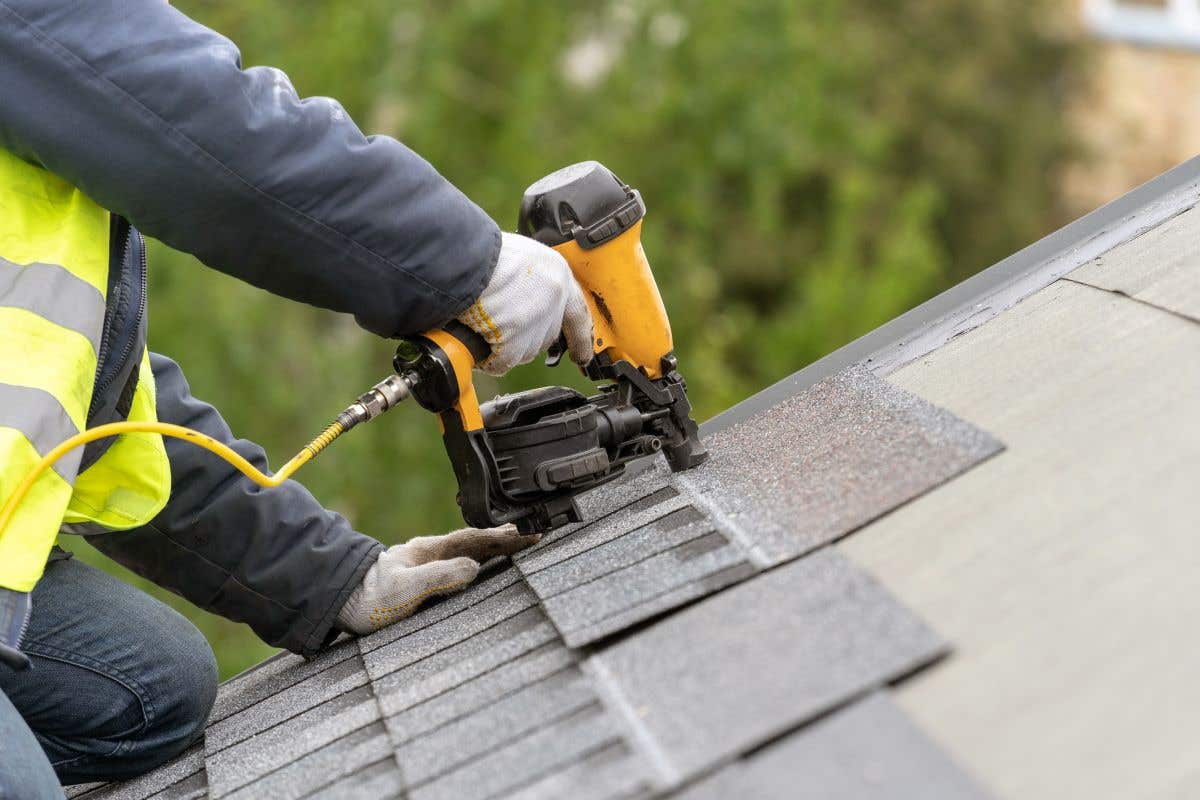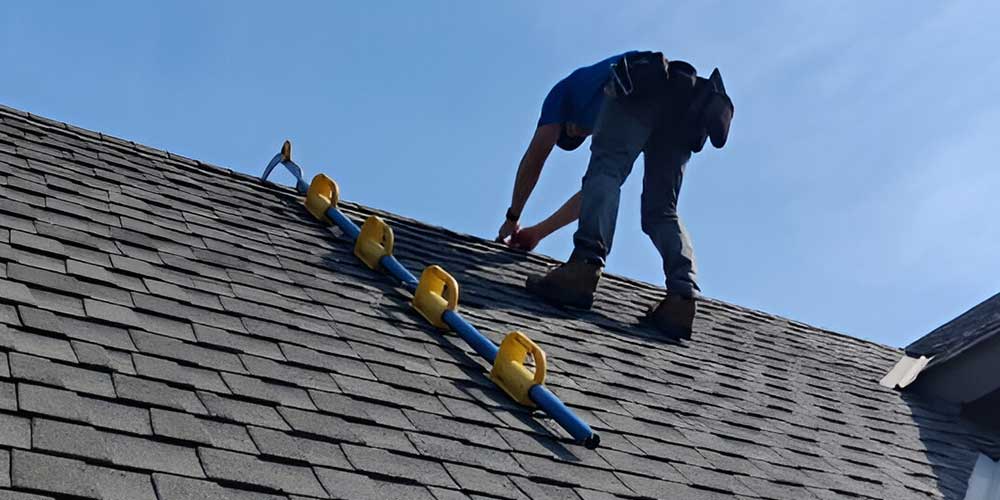Roof Repair Oahu: Expert Roof Repairs for Lasting Defense
Roof Repair Oahu: Expert Roof Repairs for Lasting Defense
Blog Article
Understanding the Various Kinds Of Roofings: A Comprehensive Overview for Homeowners
In the world of homeownership, choosing the ideal roofing design is a choice that lugs significant effects for both capability and visual appeal. With a range of options-- varying from the typical gable to the modern level-- each kind offers special benefits and obstacles that must straighten with the home owner's ecological factors to consider and certain needs. Comprehending these distinctions not only help in making an enlightened selection however likewise influences long-lasting maintenance and energy performance. As we explore the intricacies of numerous roof covering kinds, it ends up being evident that size does not fit all; the right choice may amaze you.
Gable Roofing Systems
Saddleback roofs, defined by their triangular shape, are amongst one of the most preferred roof styles as a result of their simpleness and performance in losing water and snow. This layout includes two sloping sides that fulfill at a ridge, permitting effective drainage and reducing the danger of water buildup. The steep pitch generally connected with gable roof coverings boosts their capability to handle heavy precipitation, making them suitable for various environments.
Along with their functional advantages, gable roofs supply visual adaptability. They can be adapted to different architectural styles, from traditional to modern homes. The design can additionally suit added attributes such as dormer home windows, which enhance natural light and air flow in the attic area.
Furthermore, gable roof coverings provide adequate space for insulation, adding to energy efficiency. House owners can pick from a variety of roof covering materials, consisting of asphalt tiles, steel, and ceramic tiles, further enhancing personalization choices.
Regardless of their advantages, saddleback roofs may call for additional support in locations prone to high winds or hefty snowfall. Generally, the gable roofing system stays a popular choice due to its blend of functionality, longevity, and aesthetic allure.
Flat Roofs
Flat roof coverings are usually identified for their minimal style and practical applications, especially in industrial and industrial setups (oahu roofing). These roofings include a horizontal or almost straight surface, which enables for very easy building and construction and flexible area application. While they may do not have the aesthetic allure of angled roofs, flat roofs provide numerous benefits, specifically in urban environments where maximizing space is crucial
Among the key benefits of flat roofing systems is their ease of access. Home owners can use the roofing area for various functions, such as rooftop gardens, balconies, or photovoltaic panel installations. Additionally, flat roof coverings are normally much more cost-effective to preserve and mount contrasted to their sloped equivalents, as they call for less products and labor.
Nonetheless, level roofing systems do present particular obstacles. Proper drainage is important to avoid water pooling, which can result in leakages and architectural damage. For this reason, choosing top notch waterproofing products and regular examinations are vital for making certain durability. Common materials used for level roofs consist of built-up roof (BUR), customized bitumen, and single-ply membrane layers, each offering unique benefits. Generally, level roof coverings act as a adaptable and functional selection for many property owners and businesses alike.
Hip Roofing Systems
Hip roof coverings are identified by their sloped sides that converge on top, creating a ridge. This style stands out from saddleback roofs, as all 4 sides of a hip roof slope downwards toward the walls, giving a more secure structure. The angle of the slopes can vary, enabling adaptability in architectural looks and performance.
Among the main benefits of hip roof coverings is their capability to hold up against hefty winds and adverse weather. The sloped surfaces enable far better water drain, more information minimizing the danger of leaks and water damages. Additionally, hip roofings provide increased attic area, which can be used for storage space or even exchanged livable areas.
Nonetheless, creating a hip roofing system can be a lot more expensive and complex than easier roofing system types, such as gable roofs. The added material and labor associated with developing the slopes and ensuring proper architectural integrity can cause greater expenditures. In spite of these drawbacks, many property owners prefer hip roofs for their sturdiness, visual appeal, and potential for energy efficiency.
Mansard Roofs
Mansard roofing systems, commonly recognized by their distinct four-sided design, feature two inclines on each side, with the reduced slope being steeper than the upper. This building style, originating from France in the 17th century, is not just visually appealing yet functional, as it takes full advantage of the usable space in the top floorings of a structure. The steep lower slope enables even more clearance, making it a suitable option for loft spaces or attics, which can be converted into living areas.
Mansard roofing systems are defined by their convenience, accommodating numerous building designs, from standard to contemporary. They can be created with different products, consisting of asphalt tiles, slate, or metal, offering home owners with a variety of alternatives to match their budgets and preferences. In addition, the style allows for the combination of dormer home windows, boosting natural light and ventilation in the top degrees.
Nevertheless, it is vital to think about the prospective disadvantages. Mansard roofing systems might require more upkeep as a result of the complexity of their style, and their steep slopes can be challenging for snow and rain runoff. On the whole, mansard roofing systems incorporate elegance with practicality, making them a prominent selection amongst home owners looking for distinct building functions.
Lost Roof Coverings
As house owners progressively look for simpleness and capability in their architectural styles, lost roofing systems have become a preferred selection. Characterized by a single sloping plane, a shed roofing system presents a minimal visual that matches various home designs, from contemporary to rustic.
One look at this now of the primary benefits of a shed roofing system is its simple construction, which commonly translates to reduce labor and product expenses. This design enables for effective water drainage, reducing the threat of leaks and water damages. Additionally, the vertical incline provides enough space for skylights, boosting natural light within the interior.
Shed roofings likewise use convenience in regards to use. They can be efficiently incorporated into enhancements, garages, or outdoor structures like sheds and structures. Additionally, this roofing style can accommodate different roof products, consisting of steel, asphalt tiles, or even environment-friendly roofings, straightening with green initiatives.
Nevertheless, it is necessary to take into consideration regional climate problems, as heavy snow tons might demand adjustments to the roofing system's angle or structure. On the whole, shed roofings provide a useful and aesthetically pleasing alternative for homeowners seeking to make best use of functionality without endangering style.
Conclusion


Gable roofing systems, characterized by their triangular form, are among the most prominent roof covering designs due to their simpleness and performance in shedding water and snow. oahu roofing. The steep pitch generally associated with gable roofings improves their capability to take care of hefty precipitation, making them suitable for various climates
While they may do not have the aesthetic appeal of continue reading this pitched roofing systems, level roofings provide countless benefits, especially in city settings where optimizing space is important.

Report this page